Photoluminescence Spectroscopy

Fluorescent Decay Teledyne Princeton Instruments
5 Principle Of Photoluminescence Spectroscopy Pl Download Scientific Diagram

An Introduction To Photoluminescence Spectroscopy For Diamond And Its Applications In Gemology Gems Gemology

Micro Photoluminescence Spectroscopy Details

Report Understanding The Photoluminescence Mechanism Of Water Soluble Polymer Clusters For Petroleum Exploration 62nd Annual Report On Research Under Sponsorship Of The American Chemical Society Petroleum Research Fund

Photoluminescence Wikipedia
Photoluminescence Spectroscopy Optimizes Perovskite Quantum Dots Perovskite quantum dots could be used to create the next generation of display devices, but first they must be characterized and their emission properties optimized.

Photoluminescence spectroscopy. Therefore, we investigate the potential of timeresolved photoluminescence spectroscopy as an alternative technique to identify plastic materials, and, for the first time determine the photoluminescence lifetime of a series of polymers and several nonplastic samples typically found in a marine environment. Photoluminescence spectra Photoluminescence (PL) spectroscopy can be run in many cases on Raman spectrometers with adapted laser excitations This is a nondestructive method to explore the electronic structure of molecules and solids. Photoluminescence spectroscopy of singlephoton emitters in a WSe2 monolayer Monolayers of transition metal dichalcogenides (TMDCs), such as MoS 2, MoSe 2, WSe 2, and WSe 2 are promising for conceptually new optoelectronic devices These TMDCs are direct band gap semiconductors and exhibit valleytronic effects.
Photoluminescence spectroscopy is used for the routine analysis of trace and ultratrace analytes in macro and meso samples Detection limits for fluorescence spectroscopy are strongly influenced by the analyte’s quantum yield For an analyte with Φ f > 05, a picomolar detection limit is possible when using a high quality spectrofluorimeter. When the external energy supply is by means of the absorption of infrared, visible or ultraviolet light, the emitted light is called photoluminescence and this is the process that takes place in any fluorimetric analysis. Photoluminescence spectroscopy is a noncontact, nondestructive method of probing the electronic structure of materials When light is absorbed by a material a process called photoexcitation can occur This excitation causes the material to jump to a higher electronic state before releasing energy in the form of photons as it relaxes, returning to its original energy state.
Photoluminescence (PL) spectroscopy, as applied in gemology, is a nondestructive analytical technique in which a material is illuminated with light, usually from a laser, and the resulting luminescence is recorded as a plot of emitted light intensity versus wavelength. We performed first experiments to evaluate the potential of photoluminescence spectroscopy to detect microplastics using a 405 nm laser diode for sample excitation A set of nine bulk plastic samples and nine samples of natural materials typically found in the marine environment were examined and compared The plastic and nonplastic materials could be differentiated based on the shape of the acquired photoluminescence spectra. Photoluminescence spectra were recorded using a HORIBA FluoroMax® spectrofluorometer The emission spectra were performed with an excitation wavelength of 475 nm and slitwidths of nm All spectra were corrected for the detector's wavelengthdependent response.
Photoluminescence Spectroscopy (PL) Science topic Photoluminescence is a process in which a substance absorbs electromagnetic radiation in the form of photons and then reradiates photons. Timeresolved photoluminescence (PL) spectroscopy is a sensitive method for defect detection and can also be used to obtain the decay lifetime This method is able to provide realtime information on microscopic structural changes in KDP crystals There have been a number of reports of PL properties and structural defects in KDP crystals, 11–15 11 R. Bring the microscope to your spectrometer with the MicOS microscope optical spectrometer The microscope head is fully integrated, flexible, and cost effective The perfect instrument for photoluminescence measurements, the MicOS incorporates multiwavelength excitation for various materials Custom Macro/Micro PL System.
Photoluminescence spectroscopy of semiconducting crystals Tohoku University researchers have improved a method for probing semiconducting crystals using omnidirectional photoluminescence (ODPL) spectroscopy to detect defects and impurities “Our technique can test materials at very low temperatures and can find even small amounts of defects and impurities”, says Tohoku University materials scientist Kazunobu Kojima. It is found that the photoluminescence intensity ratio of the trion and exciton reaches its maximum value for the twisted angle 0° or 60°, while for the twisted angle 30° or 90° the situation is the opposite This is mainly attributed to the change of the trion binding energy. Photoluminescence Spectroscopy in WS 2 Monolayers Photoluminescence Spectroscopy in WS 2 Monolayers In the last decade, twodimensional (2D) transition metal dichalcogenides (TMDC) have attracted a lot of attention because the same graphene protocol can also be applied to this layered compound to prepare atomically thin flakes easily The property of materials can change drastically with the decrease of the thickness of 2D TMDCs.
Visible or ultraviolet light, the emitted light is called photoluminescence and this is the process that takes place in any fluorimetric analysis To account adequately for the processes of absorption and emission of light, it is necessary to assume that radiant energy can only be absorbed in definite units, or quanta. The photoluminescence spectra of eight plastic (a) and nonplastic (b) materials are each shown in Fig 1 The spectra were recorded at room temperature, normalized to unity and shifted vertically with respect to each other for clarity The laser pulse exciting the sample had a duration of approximately 4 ns. Photoluminescence, a Luminescence stimulated by light absorption in UVVisNIR spectral region, represents any process in which material absorbs electromagnetic energy at a certain wavelength and then emits part of it at a different (usually longer) wavelength Therefore, only a part of the absorbed energy is transformed into luminiscent light.
Photoluminescence, a Luminescence stimulated by light absorption in UVVisNIR spectral region, represents any process in which material absorbs electromagnetic energy at a certain wavelength and then emits part of it at a different (usually longer) wavelength Therefore, only a part of the absorbed energy is transformed into luminiscent light. Photoluminescence spectroscopy is a contactless, nondestructive method of probing the electronic structure of materials Light is directed onto a sample, where it is absorbed and imparts excess energy into the material in a process called photoexcitation. A technique using photoluminescence spectroscopy (PL) to optically characterize the strain present in a lattice mismatched IIIV compound semiconductor bulk epilayer is described.
Photoluminescence spectroscopy is a contactless, nondestructive method of probing the electronic structure of materials Light is directed onto a sample, where it is absorbed and imparts excess energy into the material in a process called photoexcitation. Photoluminescence spectroscopy is a widely used technique for characterisation of the optical and electronic properties of semiconductors and molecules In chemistry, it is more often referred to as fluorescence spectroscopy , but the instrumentation is the same. The Electronic levels and Transitions in a fluorescence and phosphorescence PRINCIPLES OF PHOTOLUMINESCENCE S2 S0 S1 T2 T1 00 Transition Intersystem crossing Internal conversion Vibrational relaxation Equation for spin multiplicity 2S1 Where S – Total spin angular momentum Paired electrons S= (1/2)(1/2)=0 > Multiplicity = 1 Unpaired electrons S=(1/2)(1/2)=1 Multiplicity =3.
Photoluminescence (PL) spectroscopy, as applied in gemology, is a nondestructive analytical technique in which a material is illuminated with light, usually from a laser, and the resulting luminescence is recorded as a plot of emitted light intensity versus wavelength. Timeresolved photoluminescence (PL) spectroscopy is a sensitive method for defect detection and can also be used to obtain the decay lifetime This method is able to provide realtime information on microscopic structural changes in KDP crystals There have been a number of reports of PL properties and structural defects in KDP crystals, 11–15 11 R. Photoluminescence spectroscopy of semiconducting crystals Tohoku University researchers have improved a method for probing semiconducting crystals using omnidirectional photoluminescence (ODPL) spectroscopy to detect defects and impurities “Our technique can test materials at very low temperatures and can find even small amounts of defects and impurities”, says Tohoku University materials scientist Kazunobu Kojima.
Timeresolved photoluminescence (PL) spectroscopy is a sensitive method for defect detection and can also be used to obtain the decay lifetime This method is able to provide realtime information on microscopic structural changes in KDP crystals There have been a number of reports of PL properties and structural defects in KDP crystals, 11–15 11 R. Abstract The photoluminescence (PL) at 300 and 90 K from the mesoporous silicas (MSs) ordered (MCM41) and disordered (DMSs) of variously sized pores induced either by ArF laser light (λ exc = 193 nm) or by NdYAG (yttrium−aluminum−garnet) laser light (λ exc = 266 nm) was studied. P hotoluminescence (PL) spectroscopy, as applied in gemology, is a nondestructive analytical technique in which a material is illuminated with light, usually from a laser, and the resulting lu minescence is recorded as a plot of emitted light in tensity versus wavelength.
Free admission to elearning, MOOC Solar Cell Technologyhttps//wwwopenlearningcom/courses/solarcelltechnology?redirectTo=https%3A%2F%2Fwwwopenlearning. Photoluminescence spectroscopy is a contactless, nondestructive method of probing the electronic structure of materials Light is directed onto a sample, where it is absorbed and imparts excess energy into the material in a process called photoexcitation. Microscopic Photoluminescence Spectroscopy on Silicon, ISBN , ISBN13 , Like New Used, Free shipping in the US Back to home page Return to top Additional site navigation.
The FLS1000 Spectrometer sets the standard in both steady state and timeresolved photoluminescence spectroscopy for both fundamental research and routine laboratory applications The system is a modular fluorescence and phosphorescence spectrometer for measuring spectra from the ultraviolet to the midinfrared spectral range (up to 5,500 nm), and lifetimes spanning from picoseconds to seconds. The correlation between geometric structures and photoluminescence properties of the monolayer perylene (C H 12) on a graphite surface was investigated by using a combination of scanning tunneling microscopy (STM), lowenergy electron diffraction (LEED), and photoluminescence spectroscopy The formation of a wellordered perylene monolayer (ML) was confirmed upon deposition of perylene onto the room temperature substrate followed by cooling to liquid nitrogen temperature. Photoluminescence Spectroscopy valence band excited states conduction band excitation photon luminescence photon nonradiative relaxation band gap energy electrons Photoluminescence Spectroscopy Physics U600, Adv Lab I – Physics of Waves and Optics – Summer 04 D Heiman, Northeastern University, 6/1/04 I Introduction.
Photoluminescence (PL) is commonly used for investigating semiconductors that can be studied at room temperature At low temperatures, spectral lines are sharper and more intense, revealing more structure Also excitations normally masked by the high thermal phonon background at room temperature become observable at low temperatures Oxford Instruments' optical cryostats are used to study photoluminescence the type of cryostat will depend on your requirements in terms of sample environment. From picoseconds to milliseconds The fluorescence (or more generally the photoluminescence) lifetime is an intrinsic characteristic of a luminescent species that can provide insight into the species excited state dynamics TimeResolved Photoluminescence (TRPL) is the tool of choice for studying fast electronic deactivation processes that result in the emission of photons, a process called fluorescence. Photoluminescence spectroscopy analyzes the distribution of energies involved in the photoabsorption and photoemission processes, the efficiency of the photoemission as well as their temporal characteristics Because of the nondestructive and contactless nature, photoluminescence spectroscopy applies to solids, solution, solid suspensions, and gaseous materials, making it a highly versatile and sensitive technique for molecular detection and structural analysis.
Researchers have revealed more details about omnidirectional photoluminescence (ODPL) spectroscopy a method for probing semiconducting crystals with light to detect defects and impurities. Photoluminescence spectroscopy is a contactless, nondestructive method to probe the electronic structure of materials The intensity and spectral content of the emitted photoluminescence is a direct measure of important material properties, including The spectral distribution of photoluminescence spectroscopy from a semiconductor can be analyzed to nondestructively determine the electronic bandgap. What PL can tell us In many cases photoluminescence carries useful information that can facilitate sample analysis and augment the Raman data inVia confocal Raman microscopes are suited to the analysis of both Raman scattering and PL Fluorescence imaging (a type of PL) is often employed in the biological sciences, where fluorescent tags are used to reveal the presence and distribution of molecular species.
Tipenhanced Raman spectroscopy and photoluminescence Nanooptical imaging of lowdimensional materials, heterostructures and related devices PhD 19 – University of California Riverside – Advisor Dr Marc Bockrath. Working with Carbon Dots using our FLS1000 Photoluminescence Spectrometer Our FLS1000 photoluminescence spectrometer has been used for this research paper on quantum dots The FLS1000 is a stateoftheart, modular photoluminescence spectrometer for the most demanding applications in Photophysics, Photochemistry, Material Sciences and Life Sciences. Photoluminescence is an important technique for measuring the purity and crystalline quality of semiconductors Using Timeresolved photoluminescence (TRPL) one can determine the minority carrier lifetime of semiconductors like GaAs Can be used to determine the band gap, exciton life time, exciton.
The key difference between photoluminescence and fluorescence is that the photoluminescence occurs via absorbing and emitting photons having either different or equal wavelengths whereas the fluorescence occurs via absorbing a higher wavelength than the emitted wavelength Luminescence is the process of light emission We use the prefix photo with the term luminescence when the light emission is due to the absorption and emission of photons. Time Resolved Photoluminescence Spectroscopy (TRPL) Time resolved photoluminescence spectroscopy probes those excited states which have a radiative decay channel For these measurements we have two available setups In the first, a frequency tripled pulsed NdYAG laser with a pulse duration of 9 ns is used as an excitation source. View Photoluminescence spectroscopy Research Papers on Academiaedu for free.
Second volume of a 40volume series on nanoscience and nanotechnology, edited by the renowned scientist Challa SSR Kumar This handbook gives a comprehensive overview about UVvisible and photoluminescence spectroscopy for the characterization of nanomaterials Modern applications and stateoftheart techniques are covered and make this volume essential reading for research scientists in academia and industry in the related fields. Timeresolved photoemission spectroscopy and twophoton photoelectron spectroscopy (2PPE) are important extensions to photoemission spectroscopy These methods employ a pumpprobe setup In most cases the pump and probe are both generated by a pulsed laser and in the UV region. Photoluminescence can provide information about the composition and solidstate structure of a material The high spectral resolution of a Raman spectrometer can be useful in performing photoluminescence spectroscopy of solidstate materials, particularly when the emission spectra consist of narrow bands or even lines.
Description The FLS1000 sets the standard in both steady state and timeresolved photoluminescence spectroscopy for both fundamental research and routine laboratory applications The system is a modular fluorescence and phosphorescence spectrometer for measuring spectra from the ultraviolet to the midinfrared spectral range (up to 5,500 nm), and lifetimes spanning from picoseconds to seconds. A technique using photoluminescence spectroscopy (PL) to optically characterize the strain present in a lattice mismatched IIIV compound semiconductor bulk epilayer is described. Microscopic Photoluminescence Spectroscopy on Silicon, ISBN , ISBN13 , Like New Used, Free shipping in the US Back to home page Return to top Additional site navigation.
Photoluminescence spectroscopy, often referred to as PL, is when light energy, or photons, stimulate the emission of a photon from any matter It is a noncontact, nondestructive method of probing materials In essence, light is directed onto a sample, where it is absorbed and where a process called photoexcitation can occur. From picoseconds to milliseconds The fluorescence (or more generally the photoluminescence) lifetime is an intrinsic characteristic of a luminescent species that can provide insight into the species excited state dynamics TimeResolved Photoluminescence (TRPL) is the tool of choice for studying fast electronic deactivation processes that result in the emission of photons, a process called fluorescence. Photoluminescence Excitation Spectroscopy Starting SWNT material Metallicenriched SWNTs Only individualized, widegap semiconducting SWNTs fluoresce in the near.
The plastic and nonplastic materials could be differentiated based on the shape of the acquired photoluminescence spectra Our results show that photoluminescence spectroscopy holds the potential for reliable characterization of environmental samples regarding the microplastic content. View Photoluminescence spectroscopy Research Papers on Academiaedu for free. Photoluminescence Spectroscopy (PL) Science topic Photoluminescence is a process in which a substance absorbs electromagnetic radiation in the form of photons and then reradiates photons.
Photoluminescence spectroscopy is a contactless, nondestructive method of probing the electronic structure of materials Light is directed onto a sample, where it is absorbed and imparts excess energy into the material in a process called photoexcitation.

Temperature Dependence Of Phosphors Via Thermoluminescence
Light Absorption And Photoluminescence Pl Spectroscopy Chemistry Libretexts
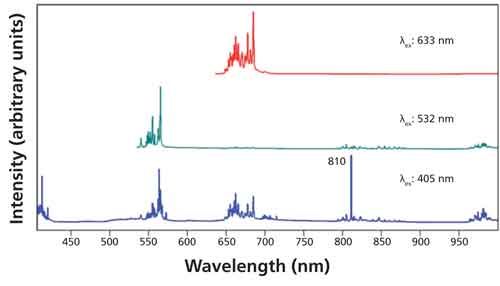
Photoluminescence Spectroscopy Using A Raman Spectrometer Spectroscopy Online

10 6 Photoluminescence Spectroscopy Chemistry Libretexts

Temperature Resolved Photoluminescence Spectroscopy Nanospectroscopy Lmu Munich
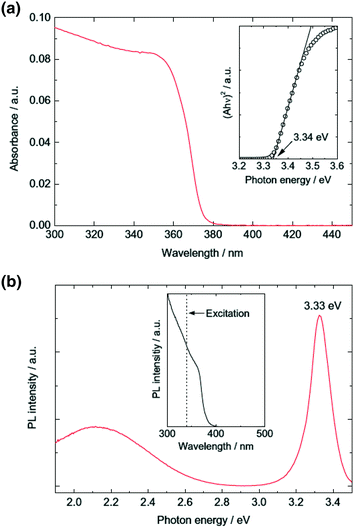
Absorption And Photoluminescence Spectroscopy Springerlink

Time Resolved Photoluminescence Spectroscopy Trpl

Photoluminescence Spectrometer Fls 1000 Spectroscopy Instruments
Http Nplindia Org Sites Default Files Research Outreach Optical19 Pdf
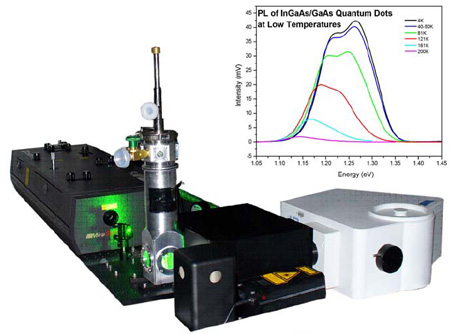
Pl Optical Interface Horiba

Laboratory Of Photoluminescence Spectroscopy Ufe

Photoluminescence An Overview Sciencedirect Topics

Elementi Di Base Della Spettroscopia A Fotoluminescenza In Gemmologia Igr Rivista Italiana Di Gemmologia Italian Gemological Review
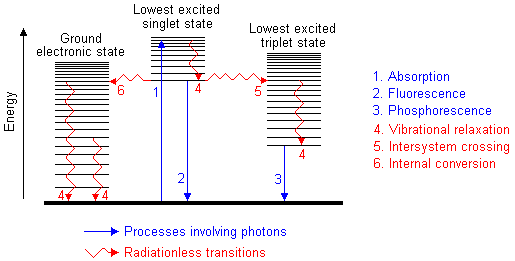
Uv Vis Luminescence Spectroscopy Theory
Www Bruker Com Fileadmin User Upload 8 Pdf Docs Opticalspectrospcopy Ft Ir Vertex An An134 Ir Photoluminescence En Pdf

Instrumentation Molecular Photoluminescence Spectroscopy

How Photoluminescence Pl Spectroscopy Works Chemistry Stack Exchange

Figure 3 From Micro Photoluminescence Spectroscopy On Heavily Doped Layers Of Silicon Solar Cells Semantic Scholar
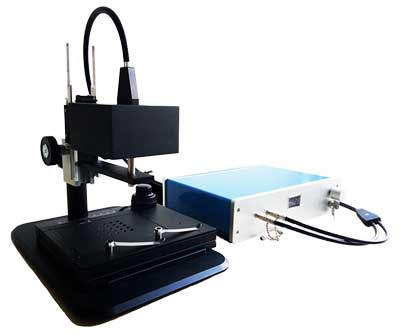
Pl 3000 Photoluminescence Spectrometer Ocean Optics Biaoqi Electronics Technology Co Ltd

Optical Absorbance Spectroscopy By Openstax Page 3 3 Jobilize

Photo Luminescence
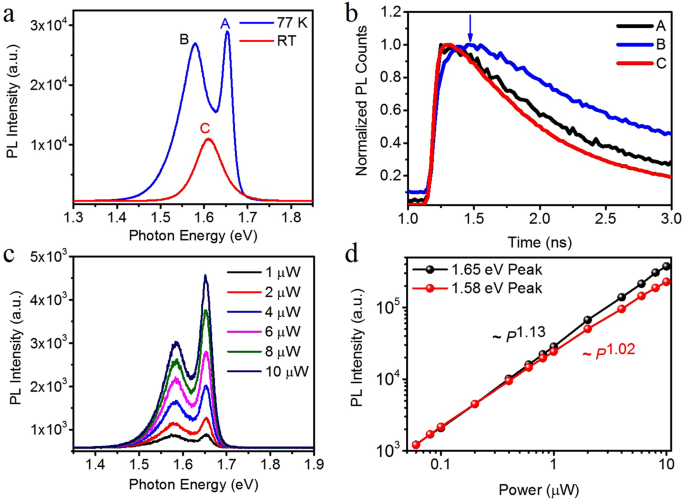
Communicating Two States In Perovskite Revealed By Time Resolved Photoluminescence Spectroscopy Scientific Reports

Paul Drude Institut Time Resolved Photoluminescence Spectroscopy Of Individual Gan Nanowires

How Can Be The Pl Spectra For Two Different Peaks Viewed For The Various Nano Structured Properties

Optical Characterization Of Semiconductors Infrared Raman And Photoluminescence Spectroscopy Techniques Of Physics By Perkowitz Sidney 1993 11 11 Hardcover Amazon Com Books
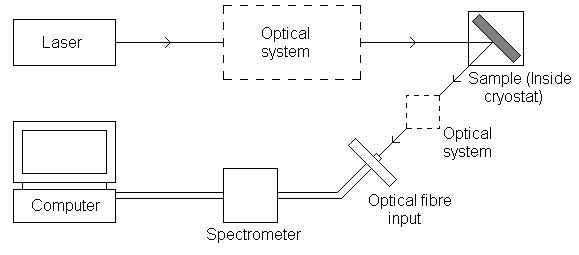
Photoluminescence

12 K Photoluminescence Spectroscopy Pl Spectra Taken With An Download Scientific Diagram

Photoluminescence Spectrum An Overview Sciencedirect Topics

Nanooptics Group Faculty For Chemistry And Pharmacy Time Resolved Microscopy

Photoluminescence Spectroscopy Of Ingan Films 5 4 Mb Witec

Cryogenic Correlative Single Particle Photoluminescence Spectroscopy And Electron Tomography For Investigation Of Nanomaterials Dahlberg Angewandte Chemie Wiley Online Library

Figure 1 Time Resolved Photoluminescence Spectroscopy Evaluation Of Cdte And Cdte Cds Quantum Dots

10 Principle Of Photoluminescence Spectroscopy A Spectrofluorometer Is Download Scientific Diagram

Photoluminescence Of Nanowires Under Ultrashort Laser Pulse Excitation Intechopen

Luminescence Spectroscopy An Overview Sciencedirect Topics
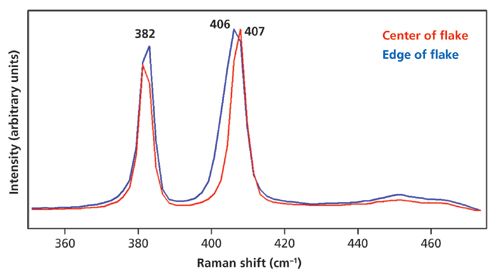
Resonance Raman And Photoluminescence Spectroscopy And Imaging Of Few Layer Mos2 Spectroscopy Online

Application Of Raman And Photoluminescence Spectroscopy For Identification Of Uranium Minerals In The Environment Spectroscopy Europe World
Q Tbn And9gcsgcsxyvcdxqqiwmdtpsfzuvncd07lyojcng0eocllbrqm0ionc Usqp Cau

Molecular Fluorescence And Phosphorescence Spectra Molecular Photoluminescence Spectroscopy
Q Tbn And9gct6iptb Xwhmtnjqqgqiwgg Avaxfzvzw7pbsrvogqdh1vdjuka Usqp Cau
.jpg)
Analysis Of Quantum Dots Using Photoluminescence Spectroscopy
Photoluminescence Spectroscopy Of Silicon Photonic Crystal Nanocaviti

Photoluminescence Spectroscopy Optimizes Perovskite Quantum Dots Features Autumn 19 Europhotonics

Photoluminescence Spectrometer Fls1000
1
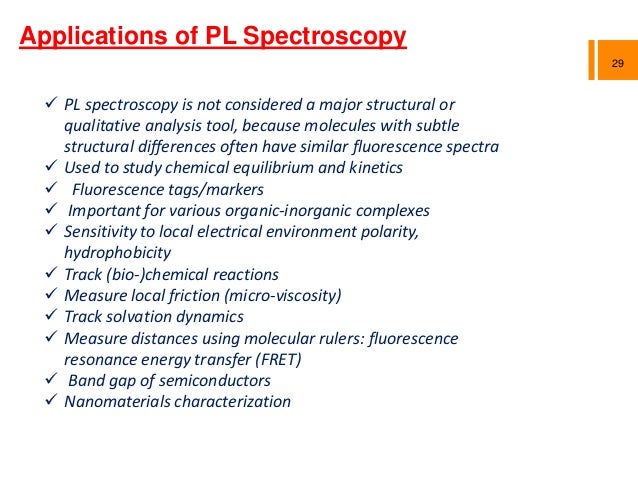
Photo Luminescence

Aqueous Sulfur Passivation Of N Type Gasb Substrates Studied By Photoluminescence Spectroscopy

Molecules Free Full Text Using Low Temperature Photoluminescence Spectroscopy To Investigate Ch3nh3pbi3 Hybrid Perovskite Degradation Html

Photoluminescence Spectroscopy In Ws Sub 2 Sub Monolayers Andor Learning Centre Oxford Instruments

Photoluminescence Spectroscopy Using A Raman Spectrometer Youtube

Introduction

Semiconductor Nanocrystals Spectroscopy Andor Learning Centre Oxford Instruments

Electroluminescence And Photoluminescence Spectroscopy Of A Phosphorescent Organic Light Emitting Diode Laboratory News From Lab Bulletin
Photoluminescence Of Semiconductors Horiba
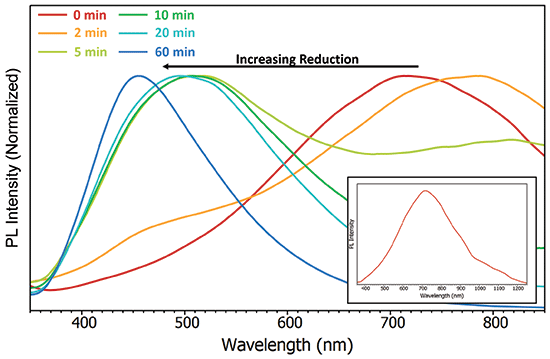
Tuning The Photoluminescence Of Graphene Oxide Spectroscopy Online

Photoluminescence Spectroscopy And Its Applications Physical Methods In Chemistry And Nano Science Openstax Cnx

Photoluminescence Spectroscopy Of Conjugates A Pl Emission Spectra For Download Scientific Diagram

Understanding The Dynamics Of Fluorescence Emission During Zeolite Detemplation Using Time Resolved Photoluminescence Spectroscopy The Journal Of Physical Chemistry C X Mol

Chapter 6 Photoluminescence Spectroscopy Ocw Utm Myocw Utm My File Php 351 Ocw Chapter 6 Pdf Xenon Pdf Document
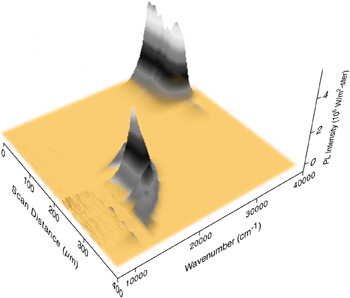
Photoluminescence Spectroscopy Photovoltaic Research Nrel

Temperature Dependent Photoluminescence Spectra Of Gaassb Algaas And Gaassbn Gaas Single Quantum Wells Under Different Excitation Intensities

天文观测 Fluorescence Phosphorescence And Photoluminescence Spectroscopy

The Photoluminescence Mechanism Of Cspb2br5 Microplates Revealed By Spatially Resolved Single Particle Spectroscopy Nanoscale Rsc Publishing

Instrumentation Molecular Photoluminescence Spectroscopy

Photoluminescence Spectroscopy Of Quantum Dots

Filtering The Photoluminescence Spectra Of Atomically Thin Semiconductors With Graphene Nature Nanotechnology
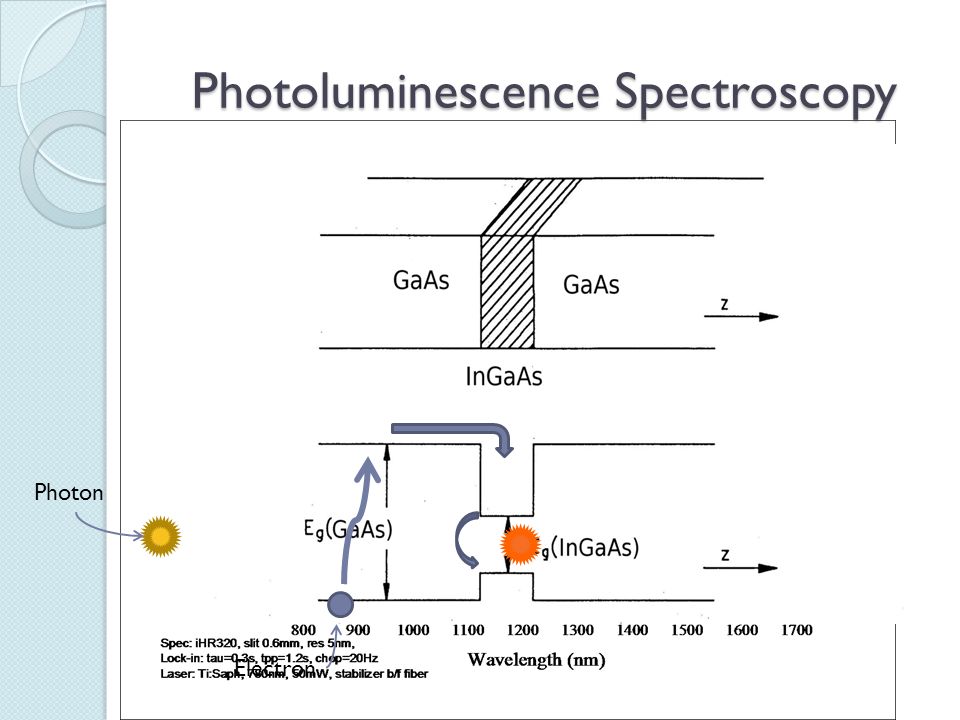
Photoluminescence Spectroscopy And Transmission Electron Microscopy Imaging Of Ingaas Quantum Dot Chains Tyler Park Kenneth Clark David Meyer Ppt Download

What Is Photoluminescence Difference Fluorescence Phosphorescence Pl Spectroscopy In Hindi Youtube

Photoluminescence Spectroscopy An Overview Sciencedirect Topics
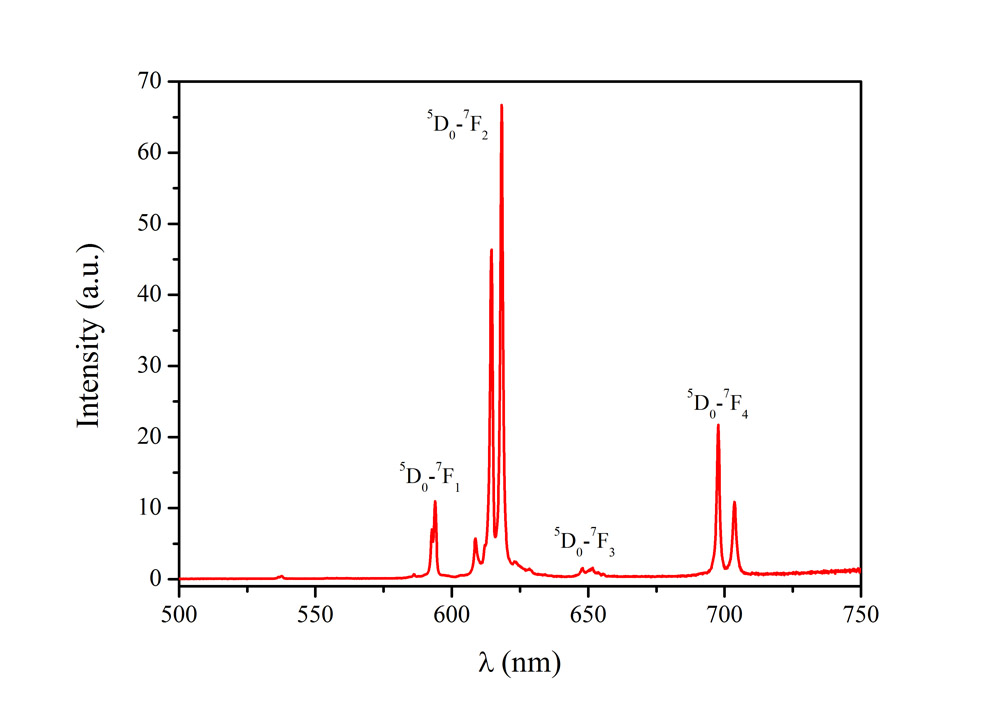
Luminescence Spectroscopy Center For Optical And Laser Materials Research
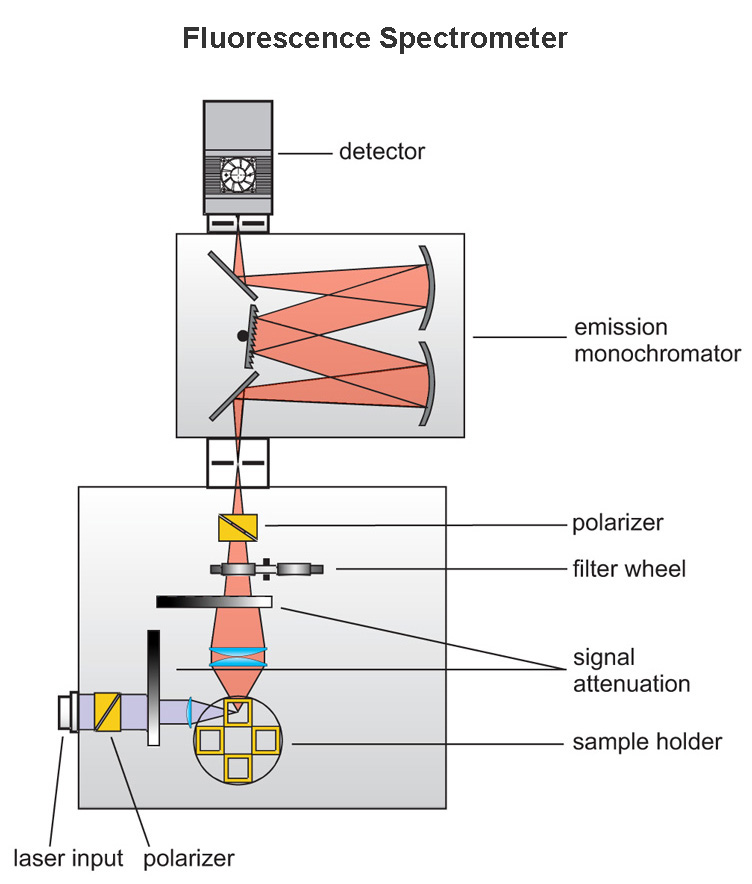
Time Resolved Photoluminescence Trpl Picoquant

Photoluminescence Spectroscopy Uncovers Photovoltaic Properties Analytical Technologies Singapore

5 Principle Of Photoluminescence Spectroscopy Pl Download Scientific Diagram

Photoluminescence Spectroscopy And Its Applications Physical Methods In Chemistry And Nano Science Openstax Cnx

Photoluminescence Spectrometer Flex One Idil Fibres Optiques

Micro Photoluminescence Spectroscopy Nanospectroscopy Lmu Munich

Photoluminescence Spectroscopy And Its Applications Physical Methods In Chemistry And Nano Science Openstax Cnx
Light Absorption And Photoluminescence Pl Spectroscopy Chemistry Libretexts

Photoluminescence Spectroscopy And Its Applications Physical Methods In Chemistry And Nano Science Openstax Cnx
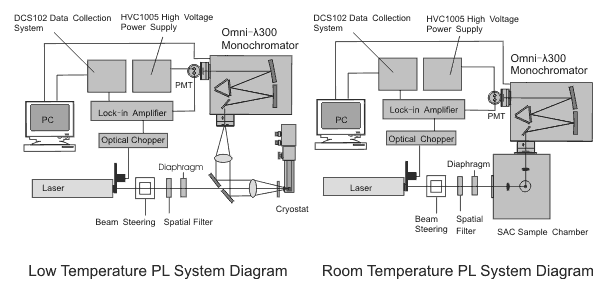
Photoluminescence Spectrometer

Photoluminescence Spectroscopy Of Semiconducting Crystals Spectroscopy Europe World

10 6 Photoluminescence Spectroscopy Chemistry Libretexts

Amazon Com Optical Characterization Of Semiconductors Infrared Raman And Photoluminescence Spectroscopy Issn Book 14 Ebook Perkowitz Sidney Kindle Store

Photoluminescence Spectroscopy Of A White Light Perovskite Led Emitter

Paul Drude Institut Time Resolved Photoluminescence Spectroscopy Of Individual Gan Nanowires
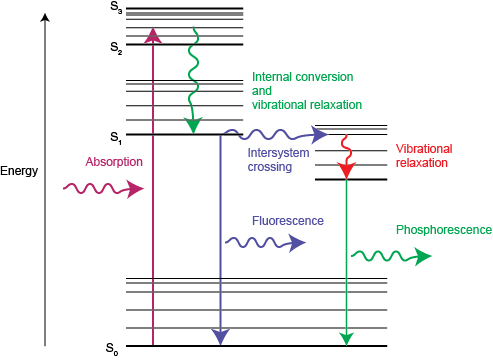
Photoluminescence Explained

Photoluminescence Spectroscopy And Its Applications Physical Methods In Chemistry And Nano Science Openstax Cnx

Figure 4 From Photoluminescence Spectroscopy On Semiconductor Disk Lasers 111 Photoluminescence Spectroscopy On Optically Pumped Semiconductor Disk Lasers Semantic Scholar

Micro Photoluminescence Spectroscopy Nanospectroscopy Lmu Munich

Uv Vis And Photoluminescence Spectroscopy For Nanomaterials Characterization Ebook By Rakuten Kobo United States
Photoluminescence Spectroscopy Of Silicon Photonic Crystal Nanocaviti
Q Tbn And9gcq7sbfdiebupkhboketjecrenbctrqgvusje Anhefflfpaoqth Usqp Cau
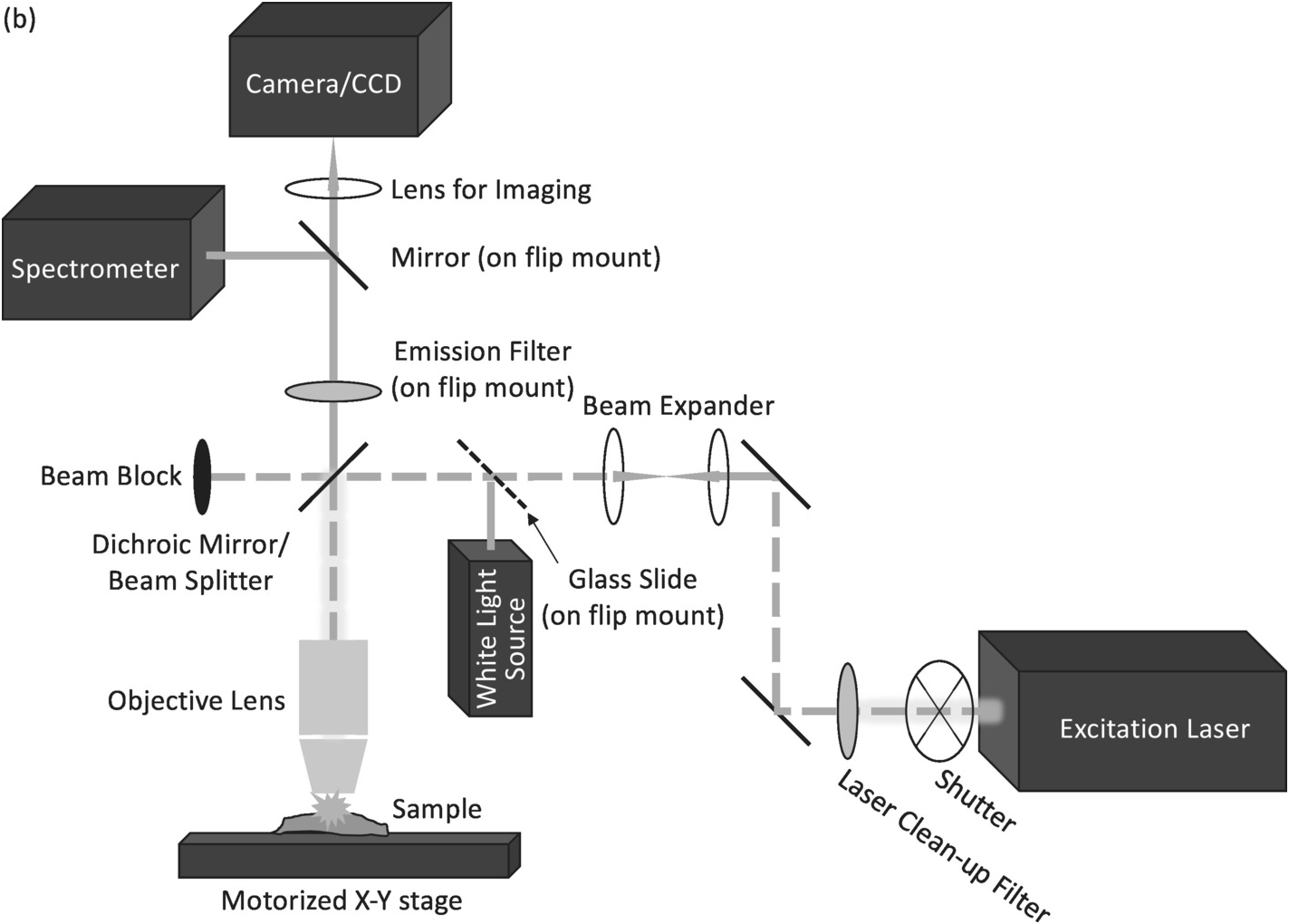
Spectroscopy So Many Squiggly Lines Chapter 3 Optical Measurements For Scientists And Engineers

Photoluminescence Spectroscopy Of Strain Activated Defects A Download Scientific Diagram
Http Ocw Utm My File Php 351 Ocw Chapter 6 Pdf

Top Pdf Photoluminescence Spectroscopy 1library

Photoluminescence Spectroscopy Optimizes Perovskite Quantum Dots Features Autumn 19 Europhotonics

天文观测 Fluorescence Phosphorescence And Photoluminescence Spectroscopy



